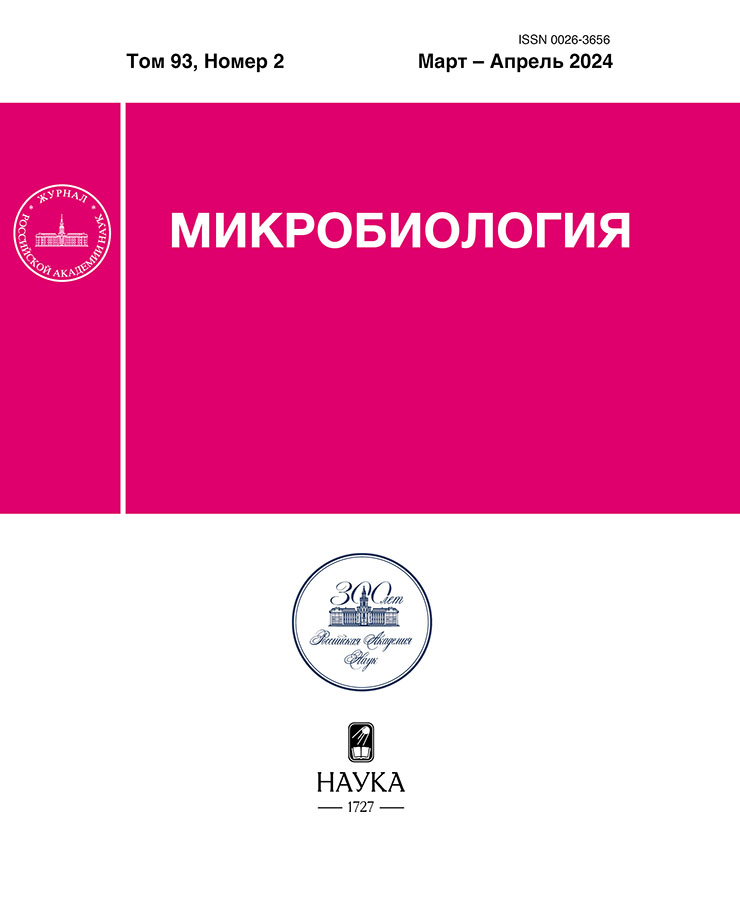Role of Copper Ions in Resistance of Modern Polymer Composite Materials to Fungal Damage
- Authors: Yakovleva G.Y.1, Katsyuruba E.A.1, Fufygina E.S.1, Danilaev M.P.2, Ilyinskaya O.N.1
-
Affiliations:
- Kazan (Volga Region) Federal University
- Tupolev Kazan National Technical Research University
- Issue: Vol 93, No 2 (2024)
- Pages: 234-238
- Section: SHORT COMMUNICATIONS
- URL: https://jdigitaldiagnostics.com/0026-3656/article/view/655142
- DOI: https://doi.org/10.31857/S0026365624020254
- ID: 655142
Cite item
Abstract
Resistance of polymer composite materials to biodamage is one of the pressing problems of our time. Incorporation of Cu2O (I) in the composition of a polymer composite based on the ED-20 epoxy resin increases its biocidal properties. Under conditions of mineral and organic contamination, the area of the samples affected by micromycetes was found to decrease with increasing concentration of dispersed particles in the composite. The affected area of the samples filled with the particles encapsulated in polylactide was 1.5 times smaller than that of the composites filled with non-encapsulated particles. Сopper oxide had a toxic effect on the Aspergillus niger strain dominant on the surface of the samples, causing a decrease in the average radial growth rate on the Czapek-Dox agar medium and in the biomass weight concentration during the growth of micromycetes in a liquid medium compared to the variant without Cu2O.
Full Text
About the authors
G. Yu. Yakovleva
Kazan (Volga Region) Federal University
Author for correspondence.
Email: yakovleva_galina@mail.ru
Russian Federation, Kazan, 420008
E. A. Katsyuruba
Kazan (Volga Region) Federal University
Email: yakovleva_galina@mail.ru
Russian Federation, Kazan, 420008
E. S. Fufygina
Kazan (Volga Region) Federal University
Email: yakovleva_galina@mail.ru
Russian Federation, Kazan, 420008
M. P. Danilaev
Tupolev Kazan National Technical Research University
Email: yakovleva_galina@mail.ru
Russian Federation, Kazan, 420011
O. N. Ilyinskaya
Kazan (Volga Region) Federal University
Email: yakovleva_galina@mail.ru
Russian Federation, Kazan, 420008
References
- Данилаев М.П., Дробышев С.В. Карандашов С.А., Клабуков М.А., Куклин В.А. Капсулирование дисперсных частиц оксида меди (I) полилактидом // Конденсированные среды и межфазные границы. 2023. Т. 25. № 1. С. 27–36.
- Danilaev M.P., Dorogov N.V., Drobyshev S.V., Karandashov S.A., Klabukov M.A., Kuklin V.A. Dispersed copper (I) oxide particles encapsulated by polylactide // Condensed Matter and Interphases. 2023. V. 25. P. 27–36.
- Akhmadeev A.A., Bogoslov E.A., Danilaev M.P., Klabukov M.A., Kuklin V.A. Influence of the thickness of a polymer shell applied to surfaces of submicron filler particles on the properties of polymer compositions // Mech. Compos. Mater. 2020. V. 56. P. 241–248.
- Bogomolova O.Yu., Biktagirova I.R., Danilaev M.P., Klabukov M.A., Polsky Yu.E., Pillai S., Tsentsevitsky A.A. Effect of adhesion between submicron filler particles and a polymeric matrix on the structure and mechanical properties of epoxy-resin-based compositions // Mech. Compos. Mater. 2017. V. 53. P. 117–122.
- Çetkin E., Demir M.E., Ergün R.K. The effect of different fillers, loads, and sliding distance on adhesive wear in woven e-glass fabric composites // Proc. IME E J. Process Mech. Eng. 2023. V. 237. P. 418–429.
- Ergün R.K., Adin H. Investigation of effect of nanoparticle reinforcement woven composite materials on fatigue behaviors // Iran J. Sci. Technol. Trans. Mech. Eng. 2022. V. 47. P. 729–740.
- Gu J.-D. Microbial colonization of polymeric materials for space applications and mechanisms of biodeterioration: a review // Int. Biodeterior. Biodegrad. 2007. V. 59. P. 170–179.
- Kadammattil A.V., Sajankila S.P., Prabhu S., Rao B.N., Rao B.S.S. Systemic toxicity and teratogenicity of copper oxide nanoparticles and copper sulfate // J. Nanosci. Nanotechnol. 2018. V. 18. P. 2394–2404.
- Kausar A. A review of high performance polymer nanocomposites for packaging applications in electronics and food industries // J. Plast. Film Sheeting. 2020. V. 36. P. 94–112.
- Naz S., Gul A., Zia M., Javed R. Synthesis, biomedical applications, and toxicity of CuO nanoparticles // Appl. Microbiol. Biotechnol. 2023. V. 107. P. 1039–1061.
- Omazic A., Oreski G., Halwachs M., Eder G.C., Hirschl C., Neumaier L., Pinter G., Erceg M. Relation between degradation of polymeric components in crystalline silicon PV module and climatic conditions: a literature review // Sol. Energy Mater. Sol. Cell. 2019. V. 192. P. 123–133.
- Sanchez-Silva M., Rosowsky D.V. Biodeterioration of construction materials: State of the art and future challenges // J. Mater. Civil Engin. 2008. V. 20. P. 352–365.
- Stroganov V.F., Kukoleva D.A., Akhmetshin A.S., Stroganov I.V. Biodeterioration of polymers and polymer composite materials // Polym. Sci. Ser. D. 2009. V. 2. P. 164–166.
- Teper P., Sotirova A., Mitova V., Oleszko-Torbus N., Utrata-Wesołek A., Koseva N., Kowalczuk A., Mendrek B. Antimicrobial activity of hybrid nanomaterials based on star and linear polymers of N, N’-dimethylaminoethyl methacrylate with in situ produced silver nanoparticles // Materials. 2020. V. 13. Art. 3037.
- Wei S., Jiang Z., Liu H., Zhou D., Sanchez-Silva M. Microbiologically induced deterioration of concrete: a review // Braz. J. Microbiol. 2013. V. 44. P. 1001–1007.
- Wu D., Zhang D., Liu S., Jin Z., Chowwanonthapunya T., Gao J., Li X. Prediction of polycarbonate degradation in natural atmospheric environment of China based on BP-ANN model with screened environmental factors // Chem. Eng. J. 2020. V. 399. Art. 125878.
- Yakovleva G., Sagadeev E., Stroganov V., Kozlova O., Okunev R., Ilinskaya O. Metabolic activity of micromycetes affecting urban concrete constructions // Sci. World J. 2018. V. 2018. Art. 8360287.
Supplementary files












